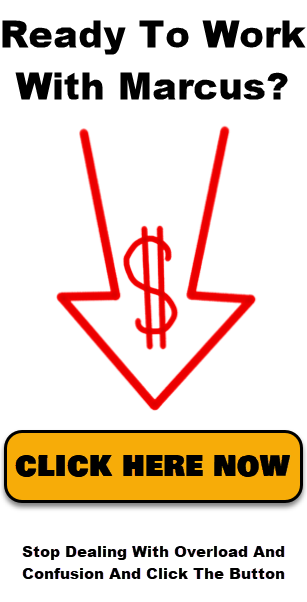Automated Ai SAAS Business Setup
I Built A SAAS Business With Ai Automation – Its Already Profitable
Unlock the Future of AI Income: Stay ahead of the curve with weekly, cutting-edge AI strategies that you can use to create new revenue streams. For less than the price of a few coffees, you get the inside scoop on the AI gold rush.
Click Here to Join Ai Profit Scoop Today
What if you could launch a business in a single day? No massive upfront investment, no team of developers, and no months of planning. Just an idea, the right tools, and the ability to let AI do most of the heavy lifting. That’s exactly what happened here—a profitable SaaS business built in less than 24 hours using AI automation.
It sounds bold, but it’s not hype. The secret wasn’t about cutting corners or getting lucky. It was about using AI not just as a tool, but as the backbone of the business itself. From brainstorming the niche to writing the copy, designing the flow, and even building the product, AI handled tasks that used to take weeks.
“AI doesn’t just speed things up—it changes what’s possible.”
That’s the big takeaway. AI isn’t just about making small improvements. It’s about transforming the way businesses are created and scaled. A SaaS business, which used to require developers, designers, and marketers working together, can now be bootstrapped by a single person with the right prompts and systems.
This isn’t theory. The business is already running and already profitable. The model behind it can be repeated, adjusted, and scaled by anyone willing to embrace how AI changes the rules.
The Core Idea – Building a Business Fast With AI
Click Here to Join Ai Profit Scoop Today
Traditionally, building a SaaS (software as a service) business was slow, expensive, and technical. You needed developers to write the code, designers to polish the interface, marketers to create campaigns, and months—sometimes years—before you had something ready to launch. But with AI, that timeline compresses drastically.
The core idea here was simple: speed over perfection. Instead of overthinking, the focus was on getting a minimum viable product (MVP) live fast and letting the market validate it.
“The goal wasn’t to build the perfect software. The goal was to build something real, launch it quickly, and start generating feedback and profit.”
AI made this possible by stepping in at each stage:
- Idea Generation: Brainstorming niches and identifying problems that needed solving.
- Product Development: Using AI tools to outline features, create workflows, and even build the product interface.
- Marketing: Generating copy, designing funnels, and drafting outreach materials in minutes.
- Launch: Publishing the SaaS quickly instead of dragging it out in endless revisions.
Why Speed Matters
In the online business world, speed is leverage. The faster you launch, the faster you learn what works. AI helps reduce the bottlenecks that usually slow entrepreneurs down:
- No waiting for developers to code features.
- No paying expensive copywriters for ads or websites.
- No wasted time second-guessing designs or messaging.
Instead, AI delivers drafts instantly, which can be polished and deployed the same day.
The Core Business Flow
Here’s how the business was structured in less than 24 hours:
- Find a Niche Problem – Start with a specific pain point that people are willing to pay to fix.
- Build the Product Quickly – Use AI to map features and automate the setup.
- Create the Marketing Assets – Let AI write the landing pages, sales copy, and ad creatives.
- Launch and Adjust – Go live fast, collect feedback, and refine the product.
Old vs. AI-Powered SaaS Creation
| Traditional SaaS | AI-Powered SaaS |
| Months of coding and planning | Product created in hours |
| Large upfront costs (dev team) | Low cost with AI tools |
| Heavy reliance on specialists | One person leveraging AI |
| Long wait before launch | Launch in less than a day |
Click Here to Join Ai Profit Scoop Today
This is the shift AI enables. It’s not about skipping the hard work—it’s about eliminating wasted time. Instead of grinding for months just to find out if your idea works, you can now validate it almost instantly.
“The faster you launch, the faster you learn. AI makes speed your competitive advantage.”
The PITM Model (Product Is The Marketing)
One of the most powerful concepts behind this SaaS was PITM: Product Is The Marketing. Instead of building a product that only works after heavy advertising, the goal was to create a product that naturally attracts attention, spreads through word-of-mouth, and sells itself as people use it.
“If your product solves a real problem in a simple way, the product itself becomes the ad.”
What PITM Really Means
In traditional business, there’s a clear separation:
- The product is what customers use.
- The marketing is what convinces them to buy it.
But with PITM, that separation disappears. The product’s value is so obvious, so easy to experience, that using it feels like part of the marketing process.
Examples of PITM in action:
- Free trials that instantly show value.
- Products that create shareable results (like reports, visuals, or outputs).
- Tools that hook users with quick wins and naturally lead them to upgrade or buy more.
Why PITM Works with AI SaaS
AI tools are perfect for PITM because they can:
- Deliver instant results that wow users.
- Create outputs users want to share (like images, summaries, or checklists).
- Guide people toward the paid version with natural upgrade paths.
Instead of shouting “buy my product,” the product itself does the convincing by solving the problem right away.
PITM in Practice
Here’s how it played out in this SaaS build:
- Problem-Solving First: The product was designed around a clear pain point people already wanted solved.
- Instant Results: The AI automation delivered value in minutes, not days.
- Built-In Marketing: Every time someone used it, the output itself became shareable and showed off the tool’s value.
- Frictionless Upgrade: Free users saw enough benefit to feel comfortable paying for premium features.
Product vs. Marketing
| Old Approach | PITM Approach |
| Separate product and marketing teams | Product and marketing are the same thing |
| Users must be convinced before buying | Users experience value instantly |
| Heavy ad spend required | Word-of-mouth and organic sharing |
| Long customer education process | Quick wins show benefits right away |
This shift flips the script. Instead of thinking, “How do I sell this?” the question becomes, “How can the product sell itself?”
And when that happens, marketing becomes less about persuasion and more about amplification—because the product is already doing the hard work.
“The best kind of marketing is when you don’t need to explain why people should buy—because they’ve already experienced the value.”
Tools & Process Walkthrough
The magic behind launching a SaaS in under 24 hours wasn’t just an idea—it was the stack of AI tools that handled tasks normally spread across developers, copywriters, and marketers. Each tool had a specific role in moving the business from concept to launch.
“I didn’t need a team—I had the tools.”
- ChatGPT – The All-Purpose Builder
- Role: Idea generation, content drafting, funnel copy.
- How it was used: Writing landing page headlines, email sequences, and brainstorming product features. Instead of hours of copywriting, ChatGPT delivered polished drafts in minutes.
- Google Gemini – Research & Insights
- Role: Market research, competitor breakdowns, keyword insights.
- How it was used: Identifying profitable niches, analyzing what other SaaS products were doing, and spotting gaps in the market.
- Manis AI – Automation & Workflow
- Role: Handling repetitive tasks and connecting different systems.
- How it was used: Automating workflows that would normally require coding—like integrating forms, triggers, and responses inside the SaaS.
- NotebookLM – Knowledge Management
- Role: Organizing data, storing research, and keeping track of content.
- How it was used: Acting as a “business brain,” storing prompts, outlines, and references so nothing got lost in the process.
- Design & Page Builders
- Role: Creating the actual SaaS front end and funnel pages.
- How it was used: Drag-and-drop builders paired with AI-generated copy made it possible to design landing pages and user dashboards without needing developers.
The Process in Motion
- Research: Gemini + NotebookLM to explore the niche and store notes.
- Product Draft: ChatGPT for outlining features and writing key assets.
- Automation: Manis AI to handle backend workflows.
- Design & Pages: Page builder tools for a clean front end.
- Launch: Assets were connected, tested, and live—all in less than a day.
Tools vs. Traditional Setup
| Traditional Team Role | AI Tool Replacement | Result |
| Copywriter | ChatGPT | Sales copy & emails in minutes |
| Market researcher | Google Gemini | Niche insights instantly |
| Project manager | NotebookLM | Organized business knowledge |
| Developer/automation expert | Manis AI | Backend setup without coding |
| Designer | Page builders + AI text | Landing pages & UI quickly created |
Instead of coordinating a team of five different specialists, one person was able to manage the whole workflow by leveraging these AI-powered tools. That’s what made the SaaS build fast, lean, and profitable from day one.
“The tools didn’t just save time—they replaced entire roles.”
Conclusion: The New Way to Build SaaS
Building a SaaS used to be slow, expensive, and intimidating. You needed a team, a big budget, and months of development before you could even think about launching. That old playbook doesn’t apply anymore. With AI, the rules have changed.
This profitable SaaS wasn’t built by luck—it was built by speed, clarity, and the smart use of tools. AI handled the brainstorming, the copy, the workflows, and even the launch. What once required five different specialists was done in less than a day.
“AI doesn’t just help you build faster—it helps you build smarter.”
The PITM model (Product Is The Marketing) ensured that the product sold itself, while automation kept the business lean and scalable. Instead of burning energy on endless planning, the focus was on solving a problem, launching quickly, and letting the market guide the next steps.
If you’ve been waiting for the “perfect time” to start your SaaS business, this is it. The tools are here. The process is proven. All that’s left is for you to take action. Start with one problem, build a simple solution, and let AI do the heavy lifting.
The future of business is faster, leaner, and more accessible than ever before. And with AI on your side, you don’t just keep up—you lead.

